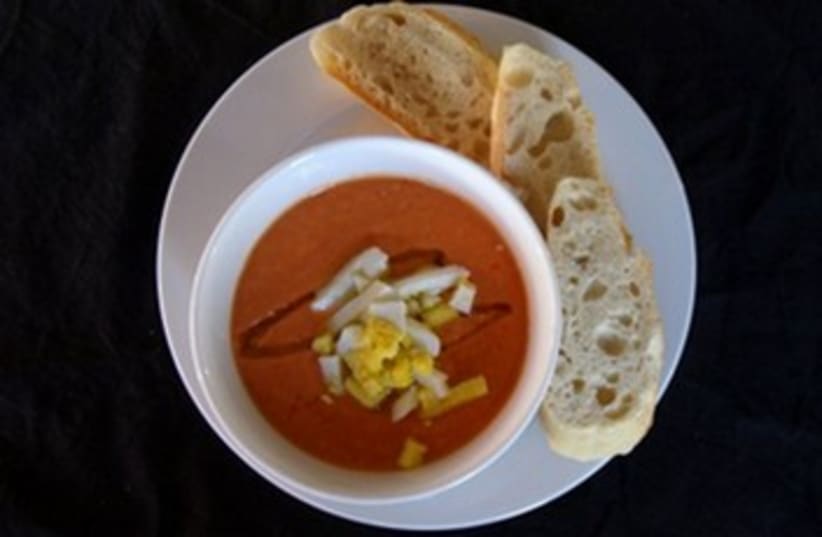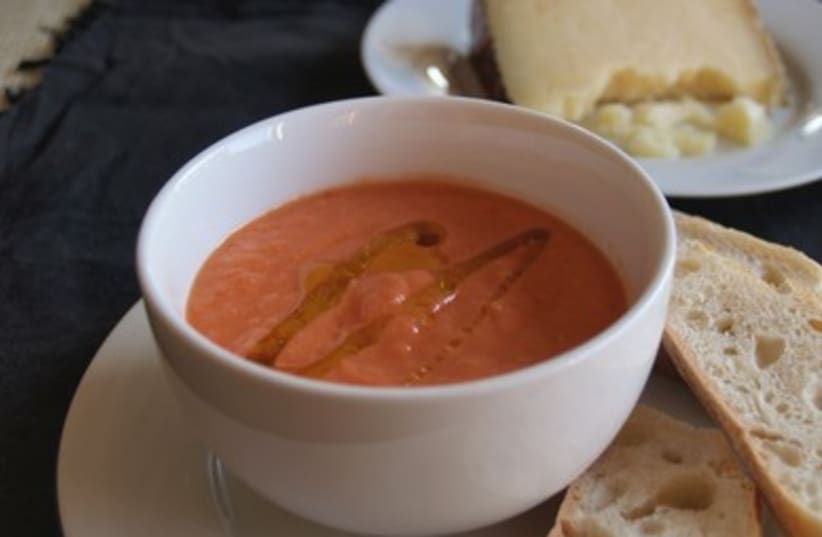

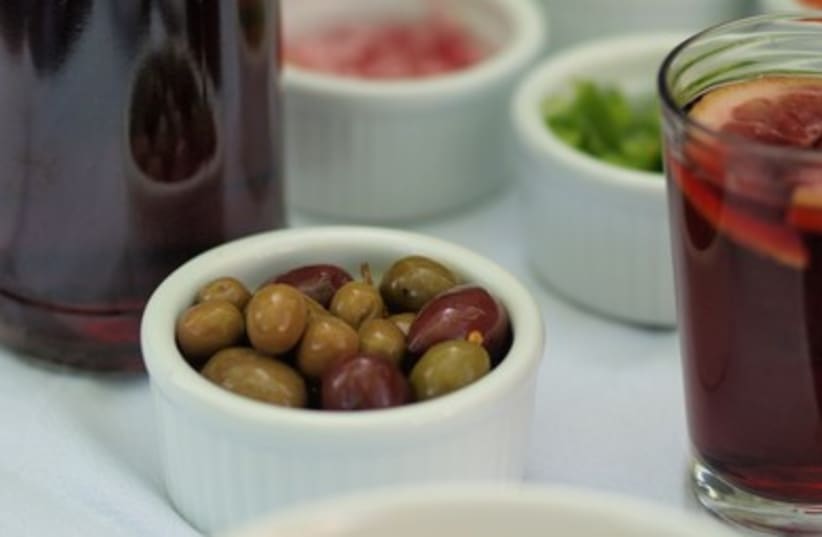
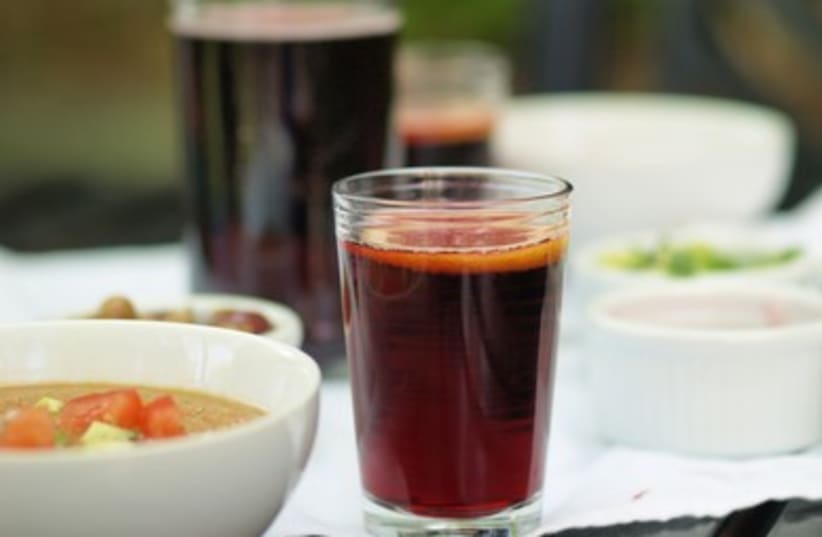
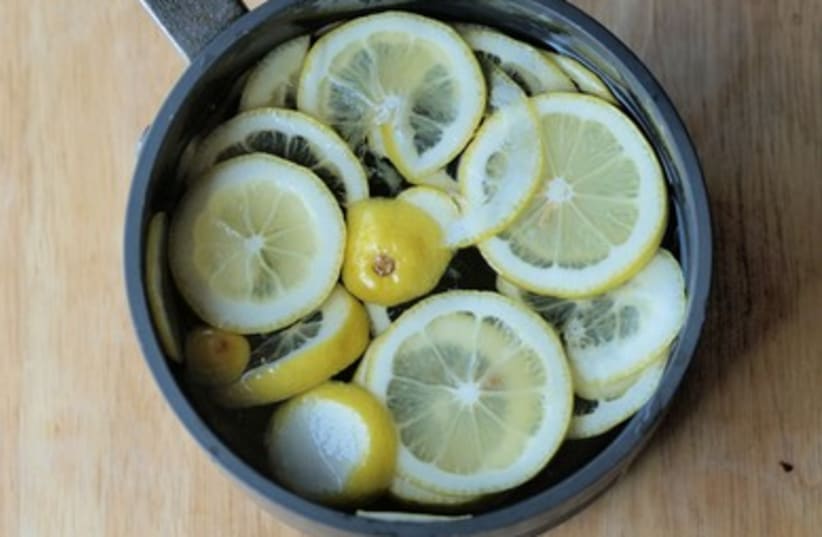

Spring in southern Spain is as you would expect spring to be – a lot of drizzle, a shy sun, and weather that changes as often as a teenager’s mood. But these late spring days before hordes of tourists swarm the city is the time of year when Seville is most hospitable to visitors seeking to sample its flavors. The trams and buses are crowded; the horse-drawn carriages are not. Chalk-drawn multi-lingual menus do not yet dot the sidewalks. Hosts and hostesses do not yet beckon passing pedestrians. Chefs do not yet need to accommodate an array of special requests. The food is honest and the service is friendly. A bar crawl is the way to go, sharing a handful of tapas – snack-sized dishes – and then moving on to the next tapas bar. The Spaniards know how to fry, which comes in handy when the sky is gray, the air is damp and patrons huddle inside. They perch on stools or lean against the bar and start with patatas bravas, - “brave potatoes” – pan-fried potato chunks peeking out from under a spicy sauce. Eventually everyone gleefully falls down the deep-fried rabbit hole to indulge in croquetas. Looking deceptively similar to large tater tots with their deep golden hue and craggy texture, these nuggets are filled with everything from béchamel cream sauce to oozy cheese to spinach to tuna to ham. Even if, because of dietary laws, you don’t partake in tasting jamón – the haunches of dry-cured ham that hang from the ceiling of every tapas bar in town - the ritual is worth watching. With each order, a long, thin, flexible knife is pulled out from behind the bar. The knife is whetted and honed and then expertly slid through the meat, yielding slices as thin as the paper that wraps the lox that emerges from the counter at Zabar’s. The knives are sharpened so frequently that they only have a six- to nine-month lifespan, the wall behind the bar a collection of retired relatives who have given their lives in service.Once the weather clears up, crowds wander out to other nearby watering holes. They gather under the ever-strengthening sun around large upended wine casks. After a quick swipe with a dishcloth, the tables are set with small dishes of briny olives that, quickly consumed, give rise to a whole new set of cravings for cool dishes heated only by spice. On order are bowls of gazpacho, a chunky liquid salad drowning in a vibrant red pool of juices, decorated with a splash of olive oil, and often surrounded by small plates of diced pepper, tomato, and cucumber for sprinkling. A variation on gazpacho is salmorejo – a cold, tomato-only soup thickened with day-old bread and spiked with a good dose of garlic. Garnished with diced egg (and, traditionally, ham) this smooth, orange-colored potage offers a hearty and filling course to top off your tapas tour. Regardless of which soup is eaten, most Sevillanos (including the children) wash everything down with tumblers of tinto de verano, the red wine of summer, a refreshing mix of red table wine, lemon soda, and seltzer. If you can’t get on a plane fast enough to fly to Seville this spring, make salmorejo in your own kitchen, invite a crowd, and eat the cold soup under the sun with a few glasses of tinto de verano.SalmorejoSalmorejo is a creamy chilled tomato soup thickened with bread and traditionally served with a sprinkle of diced egg and ham. The addition of bread results in a deep orange soup rather than the red that you might expect. In this recipe, I refer to two different olive oils. For the soup itself, use an every-day workhorse extra virgin olive oil. For garnish, I recommend a higher quality, ideally Spanish, oil pressed from arbequina olives. I’ve found that the arbequina olive produces an oil with a fresh, fruity flavor that tastes like the olives from which it is made. If you can’t pick any up in Spain, Unió is my favorite and available in the US online and at Whole Foods. That said, the salmorejo will be excellent with a drizzle of your own favorite olive oil. Serves 4-6- 8-12 ripe tomatoes- 2 garlic cloves- 1/4 C sherry vinegar (or red wine vinegar)- 2 t sea salt to taste - 3/4 C extra virgin olive oil- 2/3 day old baguette (~200 g); in a pinch, I’ve used other crusty white bread or even pita- Fruity olive oil for garnish- 2 eggsPurée. Core and roughly chop the tomatoes. You can peel them for a smoother consistency, but I haven’t found that it makes an appreciable difference. Throw them in blender with the garlic and purée. A lot. The mix will be a light red. Add vinegar, salt, and regular olive oil. Keep puréeing until smooth and orange. This can take a few minutes. Depending on the size of your blender, you might need to do it in 2 batches.Soak. Tear up the bread and drop into the blender with the tomato mixture. Let soak for about 15 minutes until soggy.Boil. Hard boil the eggs. Let them cool.
Purée again. Once the bread is good and soggy, purée until smooth and even lighter orange.Garnish. Drizzle with a special fruity olive oil and sprinkle with chopped egg (and ham if you want).Tinto de veranoTinto de verano is a simplified version of sangria popular in the south of Spain, essentially a 1:1 mixture of red table wine and lemon-lime soda called gaseosa. You can substitute Sprite or 7-Up or if you don’t like the artificial taste of soda, make your own with a lemon-lime simple syrup and plain carbonated water. Simple syrup is a 1:1 mixture of sugar and water that can be infused with different flavors or left plain and is often used in mixed drinks. This slightly more involved recipe is below. Regardless of which you make, throw in a slice of lemon and drink away. Makes 6 cups- 1 bottle red table wine – don’t bother using a fancy wine; I use a very inexpensive Cabernet - 1.5 C sugar- 1.5 C water- 2 lemons- 1 lime- 1.5 C seltzer or club sodaChill. Chill the red wine.Boil. Make a lemon and lime infused simple syrup. Bring to a boil water and sugar and stir until the sugar completely dissolves. Remove from heat. Thinly slice the lemons and lime and drop them into the sugar water. Let cool to room temperature and then chill in the refrigerator. Remove the lemon and lime slices and reserve for garnish.Mix. In a very large pitcher (or two), mix together the chilled wine, simple syrup, and seltzer or club soda. Serve in tumblers with a slice of lemon. Gayle Squires publishes recipes and photographs on the blog, Kosher Camembert. Her cooking and baking is inspired by international travel and all recipes are kosher.
